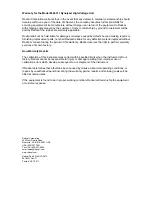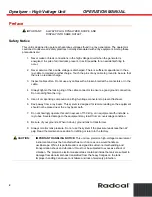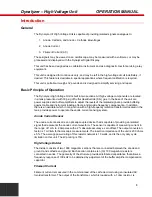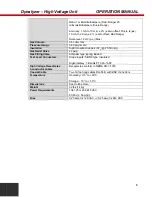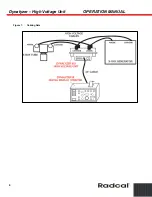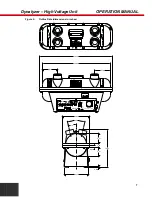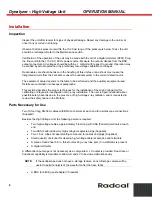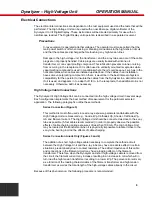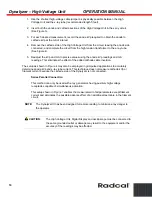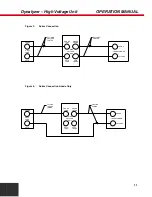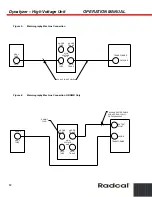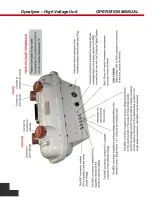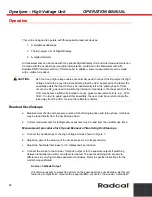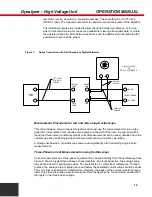
Dynalyzer – High Voltage Unit
OPERATION MANUAL
2
Preface
IMPORTANT:
ALWAYS PLUG DYNALYZER, SCOPE, AND
DISPLAY INTO SAME OUTLET.
Safety Notice
This unit is designed to operate at hazardous voltages found in x-ray generators. The operator is
cautioned to observe all safety practices normally associated with x-ray equipment. Among these
precautions are:
1. Never make or break connections in the high voltage circuit when the generator is
energized. In spite of all interlocks present, it is still possible for an accidental firing to
occur.
2. Never assume that a cable voltage is discharged. There is sufficient capacitance in the x-
ray cable to maintain a lethal charge. Touch the pins of any cable to ground to be sure that
there is no residual charge.
3. Inspect cables often. Do not use any cables with a broken braid at the connectors or in the
cable.
4. Always tighten the locking ring of the cable connector to ensure a good ground connection.
Do not overtighten the ring.
5. Use oil or vaporizing compound on all high-voltage connectors to prevent flashover.
6. Keep away from x-ray beam. This system is designed for remote reading so the equipment
should not be placed near the x-ray beam path.
7. Do not knowingly operate this unit in excess of 150 kVp, or in equipment with unstable x-
ray tubes. Severe damage to the equipment may result from an overvoltage condition.
8. Be sure of your grounds. When in doubt, ground tank to transformer.
9. Always monitor tank pressure. Do not use the system if the pressure reads less than 22
psig. Read the maintenance section for refilling or return to the factory.
CAUTION: IMPORTANT
HANDLING
NOTICE:
This unit is a precision high-voltage measurement
instrument and must be handled with as much care as one would handle an
oscilloscope. While it is portable and is designed to sustain normal handling and
transportation shock and vibration, it must not be subjected to excessive shock or
vibration. The precision electronic assemblies contained inside the tank are subject to
damage from abnormal shock transmitted from the heavy flanges on the tank.
Improper handling can cause tank failure and loss of warranty protection.


